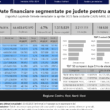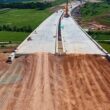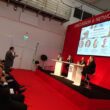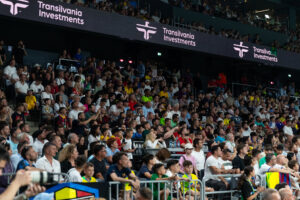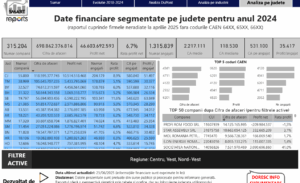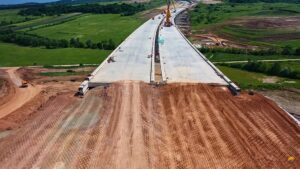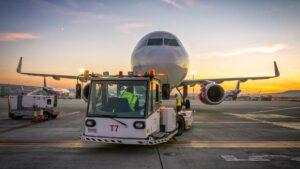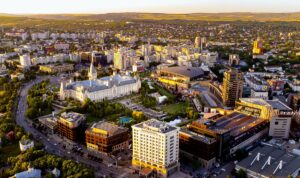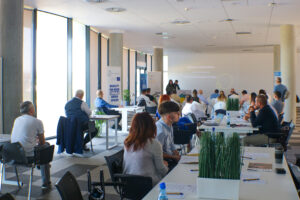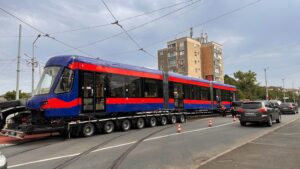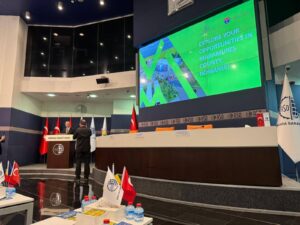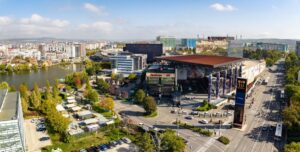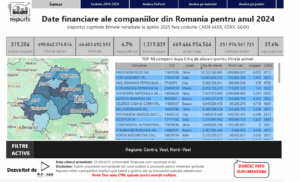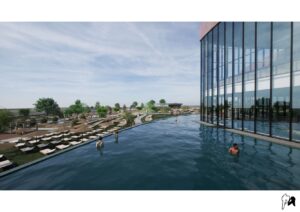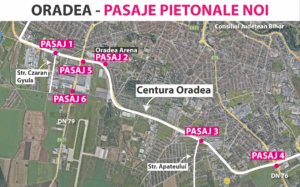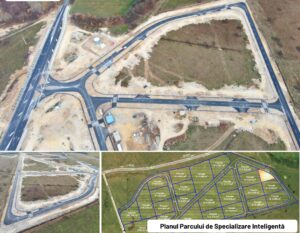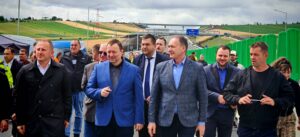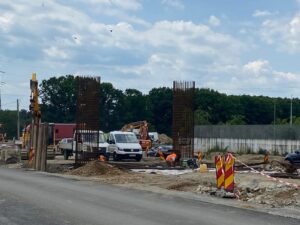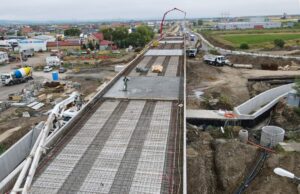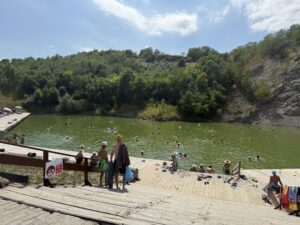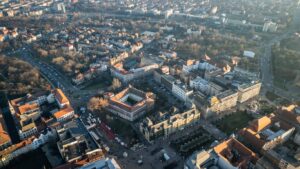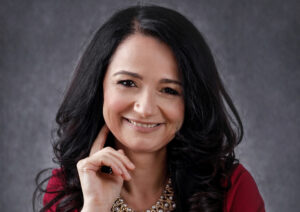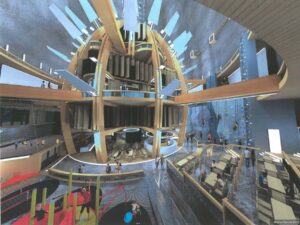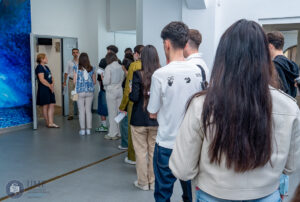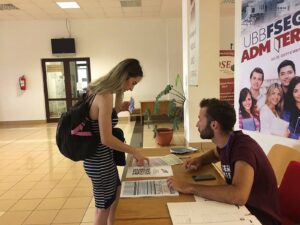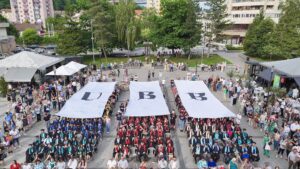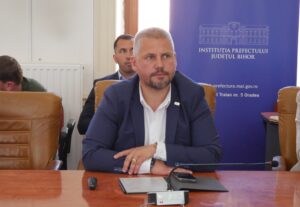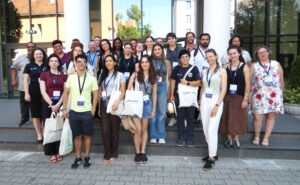Jan Van Geet, the founder and CEO of VGP, a leading international project developer of high-quality logistics and semi-industrial real estate, announces that Romania is going to be one of the main countries for expansion plans in an exclusive interview at Expo Real 2017.
How would you describe the current phase of the evolution of VGP?
VGP is currently growing very fast and what sets us apart from our competitors is that we do most of the construction ourselves – which is why we employ more than 130 people directly. We still do a lot of land banking (we currently have 2.5 million square meters of our own balance sheet, 1.2 million of which we develop). In terms of our European expansion plans, Romania is going to be one of the main countries we focus on. Nevertheless, it has to be said that over the last few years, we have been focusing a lot on Germany and other Western European countries, which we see as big growth markets. Our focus is on end users who usually have more demands than third party logistic companies that try to rent very standardized warehouse most of the time. We try to have very long-term lease agreements in place; our average leased time has gone up to just over 14 years, which in my opinion is best in class. In addition, we are trying to identify locations, where we would have full control of the land so that if we wanted to rent it out, we could. Therefore, with the new countries added to it, it has resulted in many constructions. So, at the moment we have lots of construction work going on – 563,000 square meters to be precise, more than 80 % of which is pre let. We are constantly looking at potential new locations and land acquisitions that are not only in Western Europe or traditional markets but also in places like Romania.
What drives this growth?
Many of the traditional players, for example in the car industry, are located in older buildings, which are often in the inner parts of the city. It would be difficult for our industry to expand in these localities, though, since it would collide with general housing construction, which is already lagging behind in many big cities. Therefore, up-and-coming businesses and older, more established players need to move out of the city, which is creating new demand. Then of course, there is e-commerce to consider. When the mobile phone got popular 20 years ago, there was a need for infrastructure that could support the massive increase in phone calls. You also needed to install the infrastructure in lots of areas to make phone reception available for people anywhere, any time. Since one of the key performance indicators of e-commerce companies is their delivery speed, they too need to cover a lot of territory with their delivery network. Therefore, for us, it is vital that we have a series of interconnected, well-designed warehouses, which work together seamlessly to deliver for our clients. When you compare the European and the American markets, the growth potential is clear: The latter has 795 million square meters of warehouses to cover 370 million people. In Europe, 260 million square meters of warehouses supply 500 million people. Even though land is scarcer in Europe, we strongly believe in the growth potential here. Romania, especially, is now a much more attractive place to do business, mainly because of the immense infrastructure expansion. When I drove through Romania in 2007, it took me two days to get to Bucharest – quite the adventure. Now, they are constructing high-class highways, which is going to develop the country a lot. So, even though we were initially a little reticent to expand into Romania in the beginning because of the lacking infrastructure, we really want to be there now.
That means expanding what you did in Timisoara or also other investments?
We have already expanded into Timisoara, and have been happy with the results. Now, we are looking at other cities, some of which have progressed to contract stage, which is exciting. Just like CTP and WDP before us, we are aiming to have as good as geographic spread as possible. Something, which also sets us apart, I think, is our very good local teams. Even though we have a lot of repetitive business, you still need local experience to perfectly cater to your clients’ needs. We have chosen the location in Romania because it is very close to the airport and is directly connected to the ring road, which then leads to Arad and Oradea. In Romania, establishing who owns which bits of land can be a challenge, as there is no real cadaster. Therefore, we had some real issues in the beginning, but it was also a valuable learning curve. We have expanded the Timisoara Park to 80,000 square meters and I think we will be able to construct another 40 to 50,000 square meters. There is a lot of demand for Timisoara so the market is still very healthy. After we finish the expansion, we might do another park in Timisoara but maybe we will look at another location on the other side of the city. I think 120,000 square meters at the airport is enough for one park.
What trends are influencing future developments?
What I find important is that you have a good mix on your sites. You need to take into consideration that when you are creating a park, you are cooperating with the local community. For example, if it is solely focused on heavy logistics, then you will always have conflicts with the surrounding areas and the traffic jams. Your clients will benefit from a good mix of industries, too – like the manufacturer who needs good logistics, etc. Customers today demand much more when it comes to the building’s interior. On the outside, they are still standardized concerning dimensions and fit out. But what they need on the inside – thinking technology, robotization, automatization – is a lot more complex today. Thus, the investment tends to be a lot higher and the clients tend to lease a lot longer.
Key factors for a location investment:
- Directly adjusted to the main traffic artery/highway
- It needs to be located in a place where it will not adversely affect local communities – for example, someone where you can drive trucks through without disturbing people
- A site, where the necessary infrastructure is already in place
- Public transport which is nearby is definitely a benefit
- As close as possible to large living concentrations for all our customers. Today, we are constructing projects for all the big names in our industry, such as Amazon, Lidl, etc. For example 10 years ago, it was a simple warehouse with 15 people working inside, today it is technological and a client can have thousands of employees in a warehouse. Thus, availability of workforce is a must if you want to be in a location where you can work with the best, because clients intensify their buildings by technology so much, but they also need more people.


